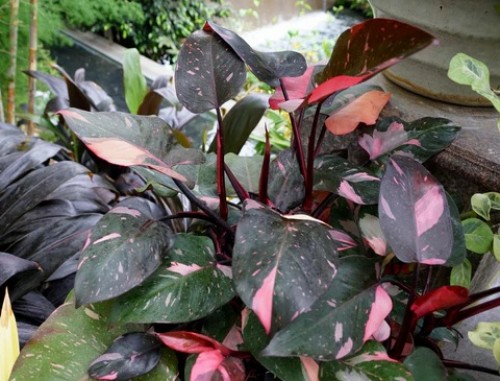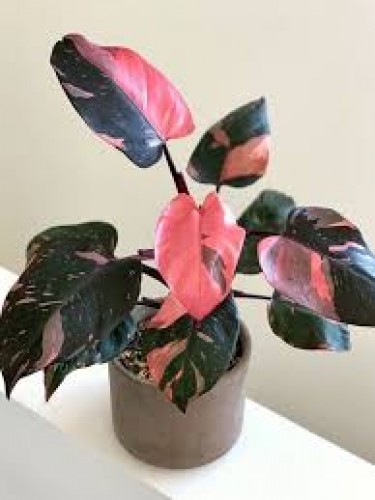60%
off
off
-
Sold
-

-

out
Philodendron 'Pink Princess'
Features
- Foliage: Heart-shaped leaves with striking pink variegation against dark green backgrounds. Each leaf is unique, displaying patterns from speckles to large swathes of pink.
- Growth Habit: Climbing plant that can reach up to 4 feet indoors. Benefits from support structures like moss poles to encourage vertical growth.
- Origin: A hybrid cultivar of Philodendron erubescens, developed in the 1970s.
- Toxicity: Contains calcium oxalate crystals; toxic if ingested by humans or pets.
Uses
- Indoor Decor: Highly sought-after for its vibrant foliage, making it a statement piece in homes and offices.
- Air Purification: Like other philodendrons, it helps improve indoor air quality by filtering airborne toxins.
Care Guide
Light
- Thrives in bright, indirect light. Direct sunlight can scorch leaves, while insufficient light may reduce variegation.
Watering
- Allow the top inch of soil to dry out between waterings. Overwatering can lead to root rot.
Soil
- Prefers well-draining, fertile soil. A mix containing peat, perlite, and orchid bark works well.
Temperature & Humidity
- Optimal temperature range is between 18°C to 27°C (65°F to 80°F).
- Enjoys high humidity levels (50-60%); consider using a humidifier or pebble tray to maintain humidity.
Fertilization
- Feed monthly during the growing season (spring and summer) with a balanced, water-soluble fertilizer diluted to half strength.
Pruning & Maintenance
- Prune to remove yellow or damaged leaves and to encourage bushier growth.
- Use clean, sharp scissors to prevent disease spread.
Repotting
- Repot every 1-2 years or when the plant outgrows its container, preferably in spring or summer.
Common Issues
- Fading Variegation: May indicate insufficient light; move to a brighter location.
- Yellowing Leaves: Often a sign of overwatering or poor drainage.
- Pests: Susceptible to spider mites, mealybugs, and aphids; treat infestations promptly with appropriate measures.